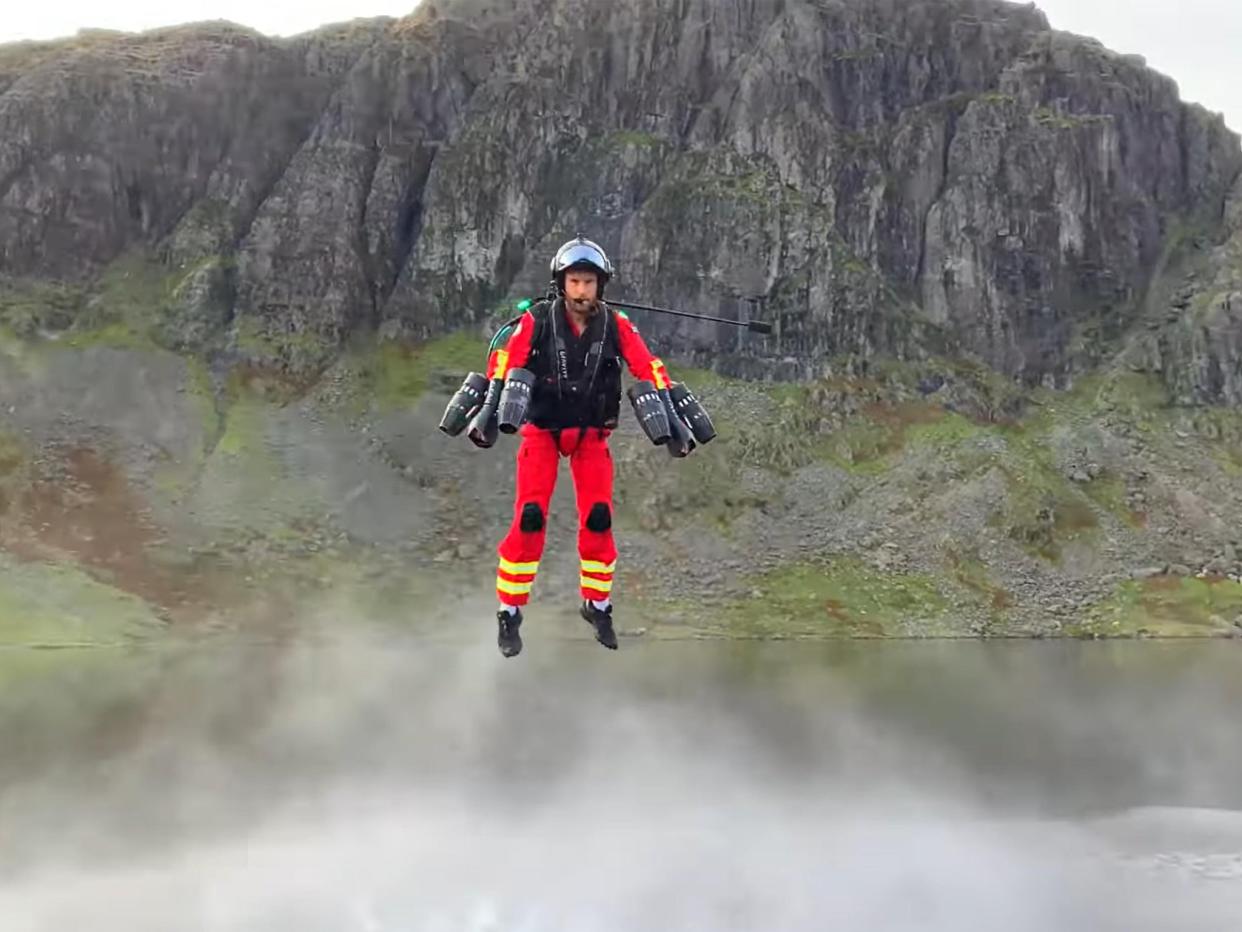First test in Lake District of paramedic jet suit that could ‘save lives’

The first test flight of a jet suit intended for paramedics has taken place in the Lake District after years of talks between the Great North Air Ambulance Service (GNAAS) and Gravity Industries.
The kit will enable a paramedic to locate, reach and stabilise patients within minutes.
The exercise demonstrated the potential of using jet suits to deliver critical care services in difficult terrains.
While it might take a unit up to 30 minutes on foot through treacherous terrain to reach patients, the suit means a paramedic could fly to the top of a fell in around 90 seconds.
Andy Mawson, director of GNAAS operations, spearheaded the project and described seeing it tested for the first time as “awesome.”
Speaking about the impetus for creating the jet suit, he said: “There are dozens of patients every month within the complex but relatively small geographical footprint of the Lakes.”
He added: “We could see the need. What we didn’t know for sure is how this would work in practice. Well, we’ve seen it now and it is, quite honestly, awesome.”
The test was carried out by Richard Browning, founder of Gravity Industries.
The suit had two mini engines on each arm and one on the back while allowing the paramedic to control movement by moving his hands.
Mr Mawson said: “The biggest advantage is its speed. If the idea takes off, the flying paramedic will be armed with a medical kit, with pain relief for walkers who may have suffered fractures, and a defibrillator for those who may have suffered a heart attack.”
He added: “In a jet pack, what might have taken up to an hour to reach the patient may only take a few minutes, and that could mean the difference between life and death.”
In a statement, the GNAAS said this test is “pushing the boundaries of emergency response.”
The Lake District is the UK’s most famous national park and draws more than 15 million people each year.
However, much of the terrain is hazardous and incidents often require the critical care team while the jagged peaks and valleys make it difficult for helicopters to safely land.
The tester “flew” from the bottom of a valley to a simulated casualty at the top of a fell near Bowfell, with the flight only taking 90 seconds. The same journey on foot would have involved 25 minutes of climbing.
Mr Mawson said: “We think this technology could enable our team to reach some patients much quicker than ever before.”
He concluded: “In many cases, this would ease the patient’s suffering. In some cases, it would save their lives.”
Read more
Hundreds found illegally camping and partying in Lake District over weekend
Angry Lake District residents erect roadblocks and fake signs to deter tourists
Ambulance on emergency call blocked by new temporary cycle lane
Air ambulances granted permission to refuel at Kensington Palace during coronavirus pandemic

 Yahoo News
Yahoo News 
